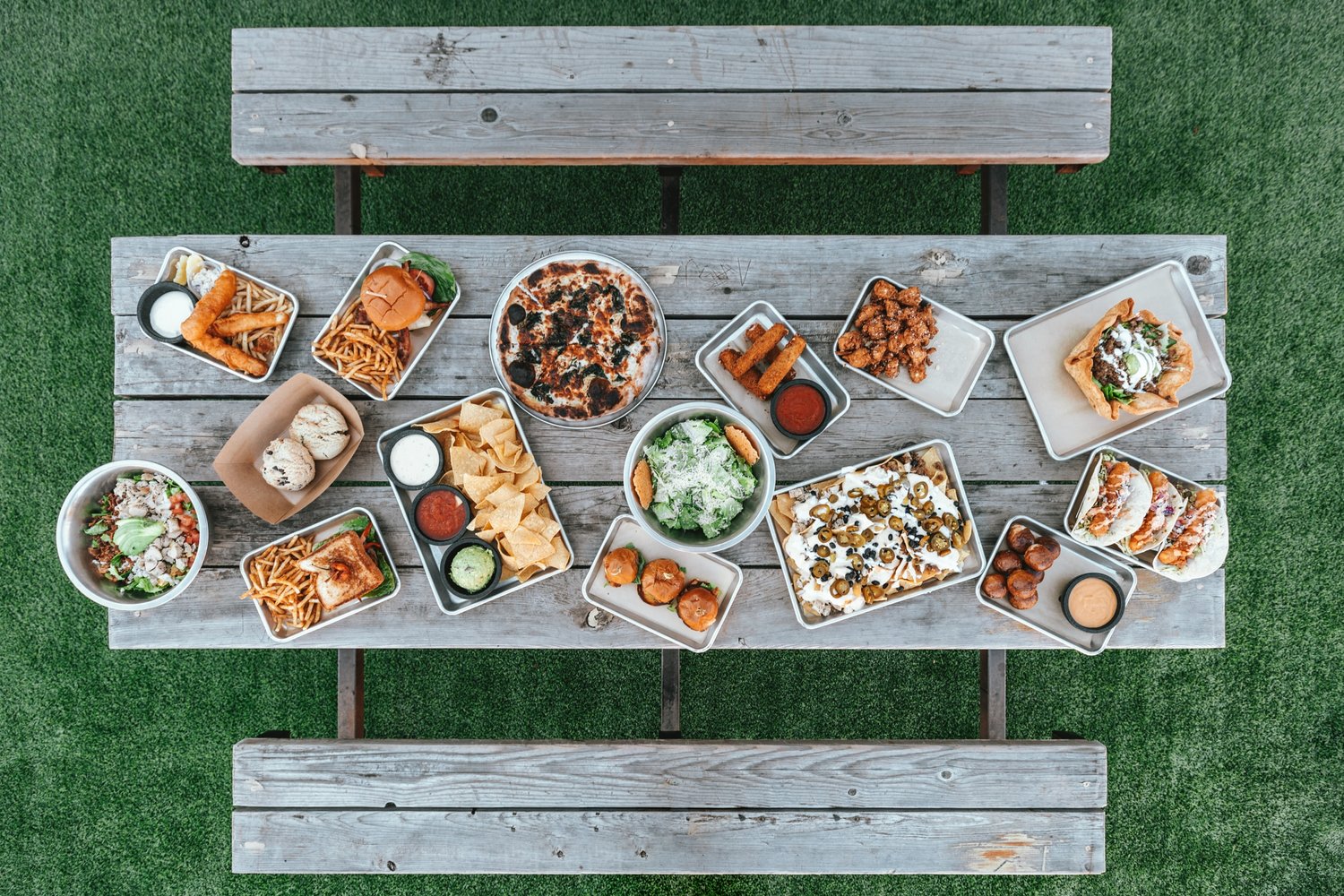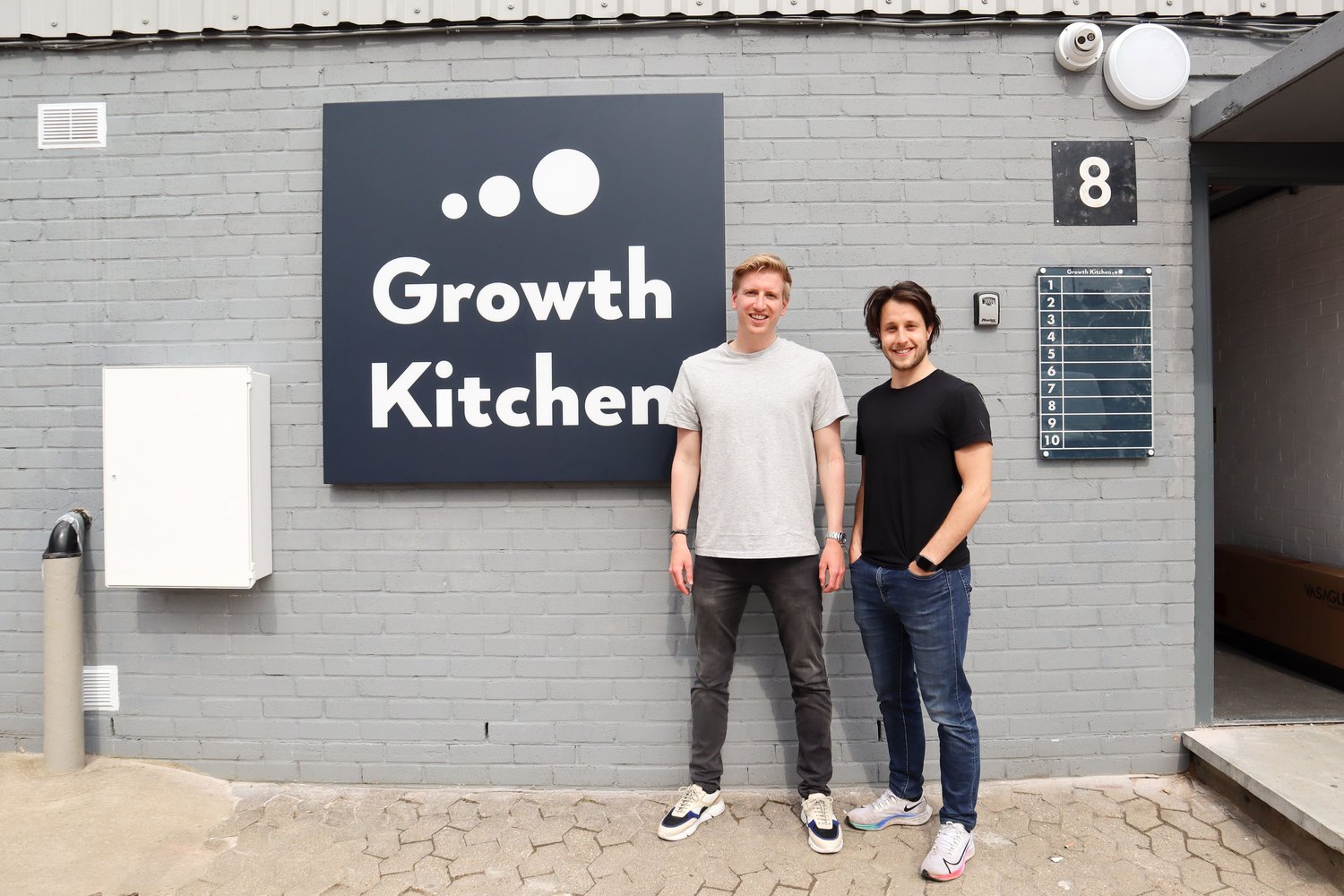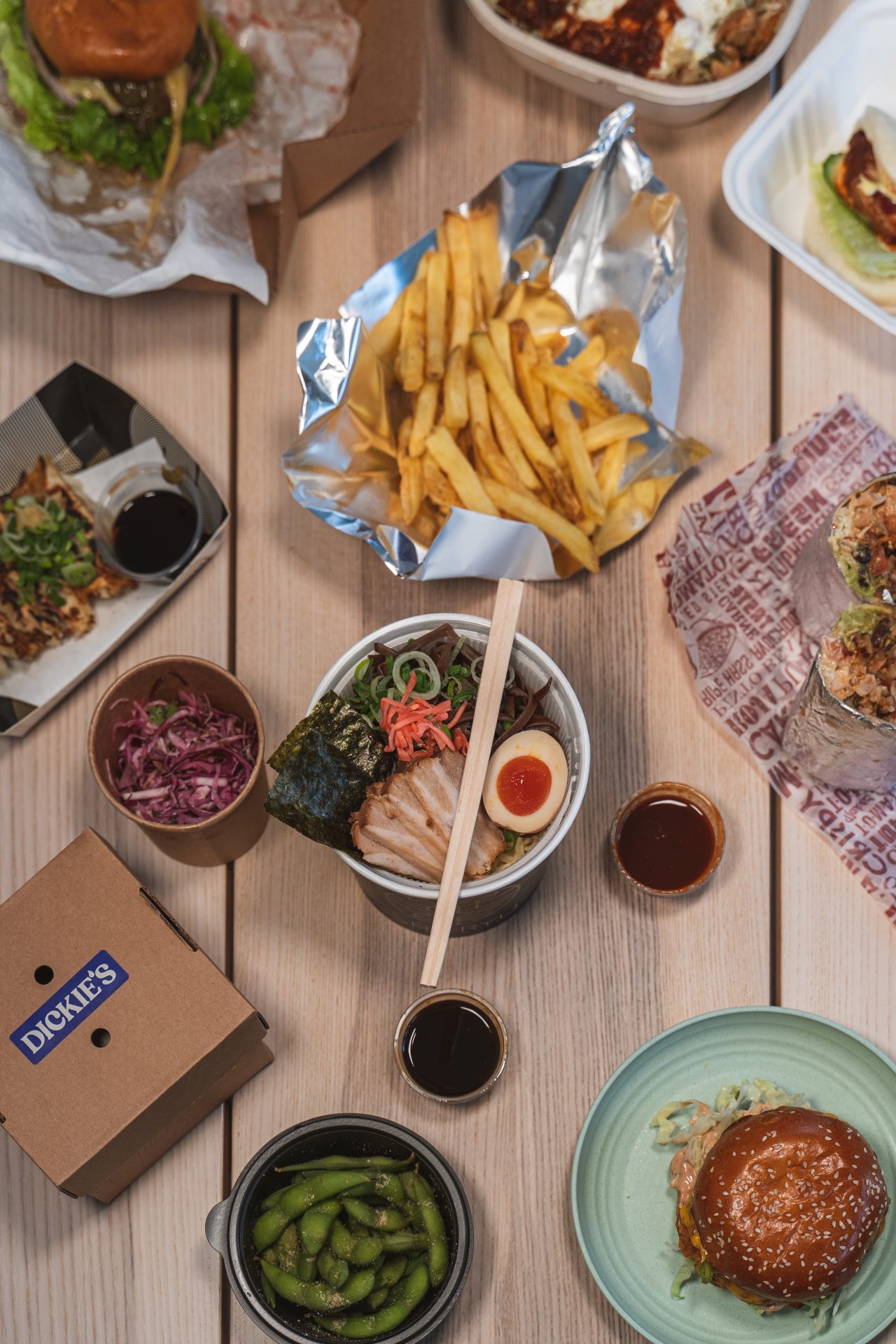As we’re about to open our second hub, we thought it was about time to shed some light on our story, mission and some of the key milestones we’ve been working towards in the last year.
Our founders Mate and Tom divulge how we’re working to grow a start-up in a laggard industry, why the future restaurateur needs to rethink what it means to be a restaurant in order to succeed and how we’re continuing to build and leverage our culture during a global pandemic.
Before we get started, it’d be great to hear a little bit about yourselves. What did you get up to before starting out with Growth Kitchen?
Tom: I went to business school and mostly worked in strategy consulting in London, Europe and the US. I’ve been focusing on consumer goods and the food sector, which helped trigger the idea for our business.
Mate: I mostly worked in startups. Launched my first company almost 10 years ago, which was not overly successful. Then worked in London and New York on various tech companies, most recently helping the CEO of Sensat.
What problem is Growth Kitchen solving (in 3 sentences)? Time to reverse that elevator pitch!
Mate: We enable emerging delivery restaurants to operate way cheaper than alone. We help them scale to lots of locations with confidence and then work with them to sell more food without the high costs. Our platform gives them the firepower they need to expand and operate as smart as a large international fast-food chain would. In the process, we hope to pass some of the savings along to the end customers…but I’m out of my three sentences and Tom will talk about that in the next question!
What’s your long-term vision? What excites you about it?

Tom: When you think about it, the way we eat most of our meals today is pretty time consuming and draining. Coming back from work in the evening, you need to think about what you want to eat and cook, go to the grocery store, shop, carry bags and come back home, then start cooking. Sometimes you buy too much and are throwing away some ingredients and food you haven’t had.
We want to give back time to people and make cooking an optional hobby, not a necessity. In other words, we want to enable people to eat well in minutes by bringing affordable, restaurant-quality food to their doorstep. Today we are doing this by helping exciting food concepts scale across neighbourhoods cheaply and fast. This really excites me because we are helping restaurant owners and entrepreneurs thrive in food delivery by helping them with various aspects of the operations. Seeing them be successful and make more customers happy is really rewarding!
Mate: Along the way, we are creating an entirely new platform for consuming food. We’re cutting out the need for grocery stores. As we go about this, we can be mindful of sustainability and health – two areas that we knew very little about 80-100 years ago when we were building up our grocery store system.
What achievements are you most proud of since founding the business?
Tom: Building a company where people are happy to work. In my previous life in consulting, I created initiatives to help consultants with mental and physical health, because I can tell you there was a big need for this (and there still is) in most corporate environments. At Growth Kitchen, it is in our NDA to actively support the wellbeing of our employees and people who work at our hubs.
Mate: We’ve created nearly 100 incredible jobs across our hubs in less than a year and we’ve sold tens of thousands of incredible meals to people. We’re doing this efficiently, so our restaurant partners can finally run their business profitably!
How did you choose who to approach when raising?
Maté: It’s very important that our investors support us in our long-term vision. Although having delivery optimised infrastructure is very important to this for many reasons (lower rent, smoother operations, etc), we are not in the business of just building delivery kitchens and renting them to restaurants. We are here to eliminate the need for grocery shopping by helping restaurants scale and optimise their operations, so they can cook food at half the cost. We don’t sell kitchens to restaurants. We curate the restaurants that we want to work with and we help them operate better.
To achieve this, we are heavily investing in technology. Over half of Growth Kitchen’s employees sit within our Product team! We’re running some cutting edge analytics on expansion and sales forecasting. We’re also launching some incredible solutions soon, that’ll make expanding with Growth Kitchen the default choice of ambitious restaurateurs. By working with us, restaurants will literally cut their costs by half and we will be able to guarantee an increased revenue too.
What are your main considerations when selecting investor partners?
Mate: It’s very important that investors understand our vision. We had to invest in real estate initially to build out the know-how and playbooks. However, we are working hard to eliminate the need for any real estate investment from us. We are starting to partner with asset owners who build Growth Kitchens! The best investors quickly understand where we are heading and how we’re building a SaaS platform in this physical world! We also like when investors are able to bring relevant contacts (e.g. real estate owners like hotels, grocery stores, etc.), so they can support us in executing this vision.
How are you planning to expand over the next few years?
Tom: We are ultimately building a network of efficient, hyperlocal delivery kitchens to help expand the delivery network of our customers and to enable more people to order ready meals at a better price. Our expansion strategy is twofold. On one hand, we are duplicating our current model with an asset-light approach, working on opportunistic deals where we are able to expand with no direct capital investments. On the other hand, we are working on building new models in hand with various types of asset owners to help them repurpose their underutilised assets and bring new experiences to consumers.
Let’s talk about these asset owners in a bit more detail. How are they benefiting from expanding with Growth Kitchen?
Mate: We have a few different types of asset owners and they benefit from working with us in many different ways. For example, we are now exploring partnerships with hotels. Their guests will be able to mix and match from all our restaurants in a single basket and have the food delivered to their room in 10 minutes. They also get additional revenues, by being able to sell food on delivery platforms. Their kitchens usually just stand empty most of the time. Pretty awesome!
Who are your customers? Why are they choosing Growth Kitchen?
Tom: Our customers are a set of amazing restaurant brands that people like and increasingly want to enjoy from the comfort of their couch! We carefully select our customers to ensure their success in our hubs. For instance, we only work with brands that are already operating delivery services from other locations, have strong ratings, have a strong brand and exposure to younger generations, and have ambitious growth options.
We also look at local supply/demand gaps to make sure that there is demand for certain types of food/brands. Really excited to have them on board and very happy to be enjoying their food from our hubs (perhaps a little bit too much).
What are the key values that drive Growth Kitchen?
Mate: We are customer-obsessed and focused on execution, execution, execution. That’s why our NPS is at 90 and that’s why we keep growing and our product keeps getting better by the day. We challenge each other, learn quickly together, provide constructive feedback and move to the next thing!
Tom: We are pulling the weight together; if a specific team member is encountering a big challenge or struggling to achieve their goal, we step out of our day-to-day and help each other overcome the struggle. We are also transparent and direct with each other, which helps to grow as a company but also personally!
How is the team structured? And what are your hiring plans for next year?
Tom: We have an amazing team helping us push our vision forward! We have three main buckets as it stands:
-
The product team, focusing on improving our offering and building more value for our customers
-
The expansion team, working on sourcing, building and filling new hubs, as well as building partnerships with asset owners
-
The operations team, making sure that our customers are happy and that our hubs are run like clockwork
We set together Objectives and Key Results on a quarterly basis to make sure that everyone has ownership and knows what they are working towards, and keep very transparent communications to remain accountable to each other.
In terms of hiring plans, in the next 6 months, we’ll be building further our core departments; for instance, hiring a business development manager, an engineer and a marketing manager. And there are many opportunities ahead!
What does your typical hiring process look like? Any tips for future candidates out there?
Mate: It is not easy to get a job in any startup – and we are definitely punching above our weight when it comes to hiring. We’ve been helped by two incredible people from Sensat, Paddy and Tom, to structure our hiring. It feels like interviewing at a much more established organisation than a one-year-old company. We’re looking for experts in all areas, ranging from marketing and sales to HR and product. Send us a message at talent@growthkitchen.co and we’ll get back to you!
Since we’re still making our way through a global pandemic, we can’t go without a question on this topic: What effect has the pandemic had on the business?
Tom: The pandemic was overall a good thing for Growth Kitchen. We literally started working on the idea right before the pandemic hit, and it only comforted us in the conviction that visionary brands need to become delivery first! On a more personal level, the lack of entertainment options during the pandemic made it easier for Mate and me to focus on building the foundations of the business!
Mate: Covid has accelerated the adoption of delivery platforms and people are obsessed with ordering food, despite high prices. Imagine what will happen to this as we bring the cost of ordering from our restaurants down!
What has remote work taught you?

Tom: Remote work is great, but nothing equals customer and team interaction! There are lots of things we can do remotely as a team and there is no need to be at the same physical location all the time. But I keep going to our hubs regularly to keep close to the front line – you can’t replace face-to-face customer interaction.
Equally, I work with the team at least two days a week from an office – you can’t replace a good old face-to-face whiteboarding session! I enjoy working from abroad from time to time and encourage flexibility for everyone in the team.
Mate: I enjoy going to the office 2-3 times a week and working in person with the team. However, sometimes it’s great to just be at home and work from there. I also enjoy working from abroad every now and then. Our engineers are based abroad. I fly over to meet them in person every 5-6 weeks, but otherwise, we work remotely. And it works perfectly well! It’s definitely a new way of working.


